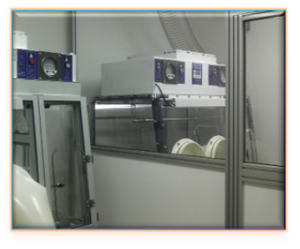“First air principle is the last defense against contamination, that’s why The importance of first air principle in aseptic processing and sterile compounding is very high” It can help guard against bad technique being utilized in upstream processes. The USP goes to great lengths to describe first air and unidirectional airflow. Significant testing and airflow characteristic patterning is also routinely done in the pharmaceutical manufacturing segment. It is tremendously important when set against potential drug contamination.
As pharmacists and technicians, we are an important part of the delivery of healthcare to patients in a variety of practice settings. One of the most crucial changes that we can actively contribute to is the “Targeting Zero” initiative, created by the Association for Professionals in Infection Control and Epidemiology (APIC) to prevent the most common and fatal healthcare-associated infections (HAIs).
Engineering controls reduce the potential for airborne contamination in work spaces by limiting the amount and size of contaminants in the CSP processing environment. Primary engineering controls are used and normally would include horizontal flow clean benches, vertical flow clean benches, biological safety cabinets and barrier isolators. Isolators provide primary environmental controls and must provide at least ISO Class 5 quality of air to which sterile ingredients and CSP’s are directly exposed.
How first air principle works?
First air is defined as the undisrupted air coming directly from a HEPA filtration source. i.e. Laminar Flow. It is important to note that many things can disrupt first air. An IV bar is a good example of a first air disruptor. Airflow is blocked by that bar and anything hanging on it. In many cases we have seen equipment with labels, cleaners and other miscellaneous products hanging from the IV bar. Not only can these be particulate generating sources, they create turbulence of airflow below them which eliminates the benefits of first air protection.
Performing smoke studies in your equipment can show the different design features, operational techniques and its impact. This first air principle is a very important step to help people understand this aerodynamic principle. A good example of a smoke study can be seen at https://www.youtube.com/watch?v=8BpselkWZmE
Air turbulence can move contamination into unwanted areas. In some cases, air turbulence can also make the removal of unwanted particulates nearly impossible. In some equipment, currently in use for sterile processing, first air is not available. Smoke studies will help you make the determination if your equipment has good first air or not.
The proposed changes refer to cleanroom industry guidelines and other guidance for testing cleanroom and engineering control performance verification. Testing will establish that your cleanroom engineering controls meet requirements under operating conditions and perform predictably as designed; by identifying necessary controls and challenges that determine if the equipment actually works during extreme conditions. More importantly, isolators and cleanrooms should be tested during preparation and transfer conditions. Installed HEPA filters for both primary and secondary controls should be challenge tested to verify the filtration system is leak-free, rather than assuming they work based upon point-in-time particle levels. Testing during more stringent operational conditions will aid in verifying that the controls provide an environment that protects the compounding process.
With a clear understanding of engineering controls, pharmacists can avoid expensive mistakes by specifying their needs on requirements up front, rather than discovering that the controls in place fail to perform as required after purchase. After all, cost-effective choices are savings if they actually work. However, avoid being lulled into a false sense of security; even the best engineering controls will not totally overcome bad practices. Aseptic technique, proper conduct, and training are critical to providing good sterile compounding outcomes.
visit HEPA filtration page to read more. Check out our Linkedin page to stay updated about upcomming Events and oppertunities



REMEMBER: Aseptic Technique needs to vary based on “First Air” flow direction. Good “Horizontal” Flow Aseptic technique is quite different than good “Vertical” Flow Aseptic technique! Make sure this is addressed in your procedures!!!
Hi
In a clean room pharmaceutical industry does laminar flow air act as reducing air flow particles contamination ??
Thanks
Yes, very much. HEPA Filtered Laminar Flow “showers” particulate away from the process. This video in our isolator illustrates that. https://www.youtube.com/watch?v=8BpselkWZmE